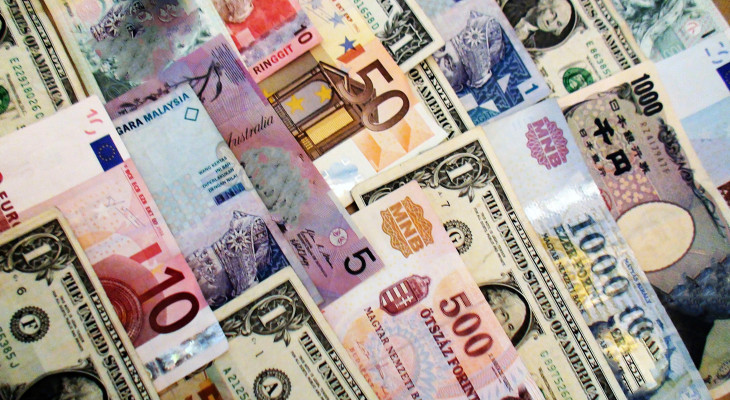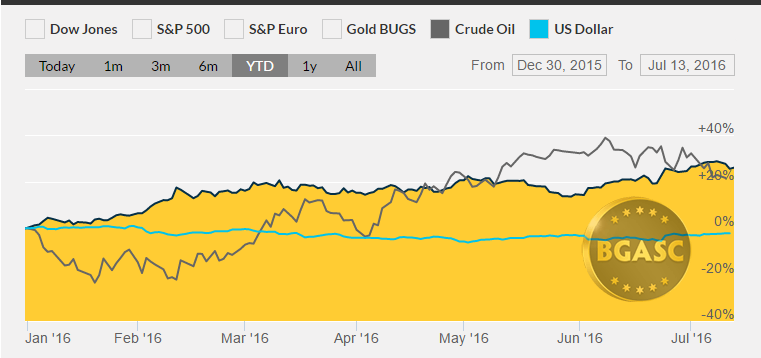
FX Friday Global Currency Review & Forecast For 7-15-16
Strong Non Farm Payroll Number Puts Fed Back in Focus
After the Brexit vote last month, equity markets cratered. By July 12, U.S equity markets had recovered all their post Brexit losses and hit all time highs. Last Friday, the Bureau of Labor Statistics issued a report showing that 287,000 new jobs were created in June. This beat expectations by 100,000 and has set the Federal Reserve watchers back on alert for talk of interest rate increases.
As if on cue, the Fed has trotted out a half a dozen or so Fed Presidents this week all stating their views that rates should be raised but not with the same immediate urgency as the calls for interest rate hikes in May. This time rate hike calls by Fed officials have been couched in terms like ‘patience’, ‘gradual’ and ‘careful’. This type of talk has not been interpreted as a renewed hawkish Fed insistent on raising interest rates, but rather just talk. With market analysts not expecting imminent rate hikes, the dollar hasn’t moved much from its slight post Brexit bounce, but equity market have strengthened.
Uncertainty Persists
While uncertainty persists surrounding Brexit, there seems to be a temporary pause on concern over the implications of Brexit. Equity markets are rebounding along with gold and silver. Earlier in the year gold and silver rose when equity markets cratered and did the same when equity markets fell after the Brexit vote. Gold and silver have risen in 2016 in a near continuous fashion, while equity markets have risen and fallen in large measures multiple times during the year.
Overview of Major Currencies and Gold and Silver Post Brexit
Gold and Silver
Gold and silver have been stellar performers in 2016. Their ascents went into overdrive immediately after the Brexit vote. Gold has risen post Brexit against all major currencies including the dollar, highlighting gold’s safe haven status.
Gold has risen more than 20% from $1097 an ounce on January 4 to $1340 an ounce on July 13.
Year to Date Dollar Index, Oil and Gold Prices

Year to Date Dollar Index, Oil and Silver Prices

Silver has risen nearly 50% from $14.00 an ounce on January 4 to $20.30 an ounce on July 13.
Oil
Oil is up about 30% in 2016, at $44 a barrel on July 13.
The gloom and doom surrounding gold and silver at the beginning of the 2016, was matched only by the negative sentiment about oil. All three commodities have soared in 2016. Oil has been harmed recently by reports of inventory build.
The Dollar
The dollar has under performed so far in 2016. Brexit gave the dollar a temporary boost, but lower GDP growth and the Fed’s failure to raise rates also weighed on the dollar in the first half of the year. Rate hike talk in May boosted the dollar. That burst was short lived when it became clear that the labor market was no longer improving at the pace the Fed had projected and therefore a rate hike in June or July was unlikely. As of July 13, the Dollar Index* was about 96 and down about 4% on the year. This week, a few Fed Presidents gave tepid endorsement to rate hikes but their pronouncements have not been as definitive as the Fed rate hike chatter in May. As a result, the dollar has not moved in reaction to recent Fed official statements.
British Pound
The British pound is down over 10% on the year. The Bank of England has been signaling that it may cut interest rates and increase stimulus. As a result the Pound remains mired at 31 year lows. The Pound hit its highest level of 2016 the day before the Brexit vote and was essentially even on the year. The day after, the pound fell over 11% and hasn’t recovered much.
.
The Euro
The Euro is up slightly this year in part due to Pound and Dollar weakness. The Euro fell slightly post Brexit but has since rebounded and recouped half of its small losses.
The Japanese Yen
The Japanese Yen strengthened against the dollar about 10% in the first half of 2016 on ‘safe haven’ trading. In recent trading the Yen has fallen on talk of more stimulus from the Bank of Japan.
The Chinese Yuan
The Chinese Yuan has undergone a series of devaluations and is about 2% weaker against the US dollar year to date.
What’s next?
There are no major reports scheduled so any changes in the currencies markets will probably come from external events or central bank announcements. Here are some reports that could impact gold, silver and currency movements next week. :
Jul 18 NAHB Housing Market Index Jul
Jul 18 Net Long-Term TIC Flows May
Jul 19 Building Permits Jun
Jul 19 Housing Starts Jun
Jul 20 MBA Mortgage Index 07/16
Jul 20 Crude Inventories 07/16
Jul 21 Initial Claims 07/16
Jul 21 Continuing Claims 07/09
Jul 21 Philadelphia Fed Jul
Jul 21 FHFA Housing Price Index May
Jul 21 Existing Home Sales Jun
Jul 21 Natural Gas Inventories 07/16 –
* The US Dollar Index tracks the US dollar vs. the Euro, the Japanese Yen, the British Pound, the Canadian Dollar, the Swedish Krona and the Swiss Franc. The Euro comprises nearly 58% of the index.
This article by BGASC is not, and should not be regarded as, investment advice or as a recommendation regarding any particular course of action.
